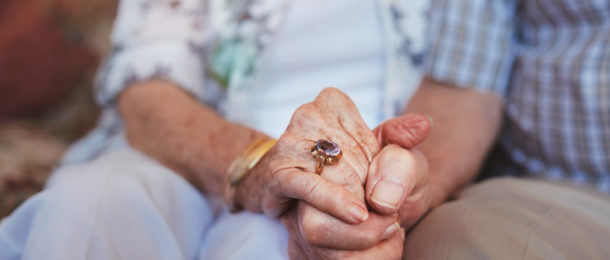The Best Pain Management Treatment Options

Back pain can disrupt your lifestyle. Whether your pain is muscular, skeletal or unknown, it can control how well you function in everyday activities. Severe back pain can make it hard to walk or complete ordinary tasks. However, different pain management treatment options can increase your quality of day to day life by healing your pain.
Often, pain in your back can lead to pain in other places in your body. Back pain can shoot to your legs, neck and even arms. Some people note they experience migraines on top of the pain they feel in their back. In addition, pain can range from achy and dull to stinging or burning.
Some may feel a numbing or tingling, while others may feel spasms and tightness. Some people may have back pain for a few days or weeks, while others may experience chronic pain that lasts for months.
Back pain is truly unique to the individual.
Types of Back Pain
Generally, there are two common types of back pain. Mechanical back pain refers to pain that originates from the muscles, joints, ligaments or bones surrounding the spine. Depending on how you sit, walk, and move around, the pain can increase or decrease.
Radicular pain deals more with the nerves of the spine, when they become pinched or inflamed. The pain is typically sharp and burning, shooting down through the legs.
Back pain can also come from other parts of the body that may be suffering an injury or abnormality. Kidney stones is an example of this.
Getting the right diagnosis for your back pain is the first, and most important, step in developing a pain management treatment plan.
Getting a Diagnosis for Back Pain
Proper diagnosis begins with a comprehensive evaluation by qualified medical professionals, ones that specialize in the treatment of back pain.
The goal of health professionals should be to increase your ability to function, while decreasing your pain symptoms.
Ultimately, they should try to heal your pain through cutting edge treatments, mixed with therapies and other techniques.
In some cases, when a source of pain cannot be eliminated, the symptoms can still be reduced.
Quality pain doctors will provide you with extensive education regarding your source of pain, as well as information on all treatment options available. Keep reading to learn more on common treatment options.
Conservative Pain Management Treatment Options for Back Pain
Doctors will likely start with more conservative treatment options to alleviate your back pain. Conservative treatments include taking aspirin or ibuprofen. Other conservative methods may include physical therapy, nerve pain relievers, and simply allowing time to heal wounds.
Rest and relaxation can sometimes be the best prescription. Controlled substances are used after more conservative options fail. Doctors also implement other treatment methods such as steroid injections.
Steroid Injections for Back Pain
Steroid injections relieve pain in the lower back and legs. Pain may be originating from inflammation or herniated discs. Steroid shots are not the first measure a doctor will explore but if treatments like ibuprofen do not work, doctors turn to steroid injections.
Steroid shots include numbing agents as well as anti-inflammatory medicines, giving you relief from pain in target areas.
Some target areas are more common than others. For instance, epidural injections target nerve areas at the roots that extend to other areas of the body. Tendons, or inflammation of tendons, is another common target area.
Arthritis is a problem suffered by many. Steroid injections inserted into joints can calm inflammation associated with arthritis.
Spinal Cord Simulator Implant for Back Pain
The spinal cord stimulator implant takes advantages of electrical impulses that prevent pain signals from being sent to the brain. The remarkable thing about this device is that the patient or the doctor can use it as needed.
Doctors use these implants on patients who no longer benefit from conservative pain management treatment techniques.
Most patients undergo a trial period first and if the device works, the implant is put in later with a more permanent device.
The implant is controlled externally and can be adjusted as you see fit, increasing or decreasing the amount of stimulation to send.
Celiac Plexus Block Procedure for Back Pain
The celiac plexus is comprised of a bunch of nerves surrounding the aorta. This procedure, however, is set up to eliminate pain in the abdomen.
Because the celiac plexus leads to the abdomen, blocking these nerves will prevent pain signals from entering the abdomen.
If you have chronic pain in your abdomen, pancreatitis, or any cancers of the pancreas, the celiac plexus block procedure could benefit you.
Superion Indirect Decompression System for Back Pain
The superion indirect decompression system is primarily used on those who suffer from lumbar spinal stenosis (LSS), which is a degenerative condition of the spine. It refers to the wear and tear, or aging, of the spine over time. LSS can cause narrowing of the spine, which creates a pinching of the nerves in the back.
The superion indirect decompression system basically opens the spinal canal so the nerves are no longer pinched.
Back Pain Management Treatment Using Disc Denervation
Pain associated with the facet joint is quite commonly chronic for those with neck and back pain. Disc denervation is a good pain management treatment option by using such things as radio frequency ablation. It gets rid of abnormal tissue with the use of extreme levels of heat through electrical stimulation.
There is specific information you can give your pain management treatment doctor that will help in your diagnosis. You may find taking notes on your pain to give to your doctor can help.
Providing answers to the following questions can help your doctor visualize and understand your pain:
- Where is the pain?
- Does it stay in the same place or relocate?
- Does your pain ease or get worse depending on how you are standing or sitting?
- Other than pain, do you have other sensations like tingling or numbing?
- How has your pain affected your quality of life?
- How has your pain affected others in your life such as family and friends?
From there, your doctor will be able to choose the right pain management treatment to help you feel better as quickly as possible.
Aging In Place Is A Realistic Option In Spite Of Mobility Issues

Growing older can mean an increasing loss of mobility for many people. As age and health conditions causing chronic pain take their toll, getting around, even at home, can become challenging.
Eventually, that can make certain life decisions necessary for the sake of health and safety.
Thankfully, there are ways to modify residences which allow seniors to age in the comforts of home.
Aging in place.
North Americans are growing older.
The number of seniors in Canada is projected to more than double by 2036, reaching 9.8 million, and seniors in the U.S. are projected to reach 98 million by 2060.
A significant portion of older adults suffer with health concerns such as arthritis that cause chronic pain and reduce mobility.
Thanks to design concepts oriented toward “aging in place,” more seniors than ever before are able to grow older and remain independent in their own homes, in spite of mobility loss.
To age in place, seniors can modify their homes for better accessibility, and more new homes are being built with aging in place in mind than ever before.
Many people assume accessible changes will feel institutional. However thanks to the popularity of aging in place, some experts point out modifications can be comfortable and attractive.
Easy modifications.
Many of the home modifications helpful to seniors are simple and inexpensive, yet they go a long way toward eliminating risk of injury.
For instance, SFGate suggests installing supportive handrails on both sides of indoor and outdoor stairwells.
Eliminating slipping and tripping hazards such as ottomans and piles of magazines can make a big difference in increasing safety in the home.
Adding nonslip tape strips to stair steps and shower and bath areas can also help seniors avoid accidents, and shower and bath safety can be improved with a seat in the shower stall, a handheld spray nozzle for seated washing, and the installation of grab bars.
Simply improving visibility in the home can be a boon.
Consider reflective tape on changes in step heights, increasing natural daylight with sheer curtains, and adding nightlights in commonly traveled dim areas, such as the bedroom, hallway, and bathroom.
Installing brighter light bulbs can also help, and adding under-cabinet task lighting in the kitchen can make food preparation easier.
Exchanging traditional light switches for motion-activated light switches or even rocker switches can help as well.
Other easy modifications include such things as lever-style door handles and faucet handles, non-scald devices on water faucets, and garage door openers.
More advanced changes.
Depending on the situation, many seniors opt for more advanced home modifications.
Homes with steps to the entrance can be re-graded, or a ramp can be installed for safer and easier movement from the car and into the home.
Doorways can be widened for easier accommodation of assistive devices, light switches can be lowered, and outlets can be raised to be reached more easily.
Some seniors benefit from push-button appliances.
A fully accessible walk-in shower can help avoid slips and can make transitioning in the bathroom easier.
Some professionals suggest an open floor plan and easy-care landscaping. And as Huffington Post notes, ideally seniors should enjoy one-floor living spaces.
This can mean turning a home office into a master suite, or moving laundry facilities from the basement to the kitchen, bathroom, or bedroom area.
Moving ideas.
Sometimes modifying a home isn’t a practical solution.
Many seniors prefer not to live with the mess of remodeling or the hassles of arranging for contractors.
Thankfully, accessible homes are increasingly available.
Seniors can use online filters to search for accessible homes for sale in desired areas.
For example, you can find accessible homes in Thousand Oaks, CA, with a median listing price of $900K. Using an aging-in-place accessibility checklist helps seniors find the right home to meet their needs.
Chronic pain and loss of mobility due to age and health conditions such as arthritis don’t mean seniors need to give up their independence.
Homes can be modified to accommodate their needs.
Thanks to aging-in-place design, older adults can safely remain in their homes.
This is a guest blog post written by Kent Elliot, author of “Aging in Place One Project at a Time: DIY Home Modifications That Don’t Require a Professional“. You can find his book here.
